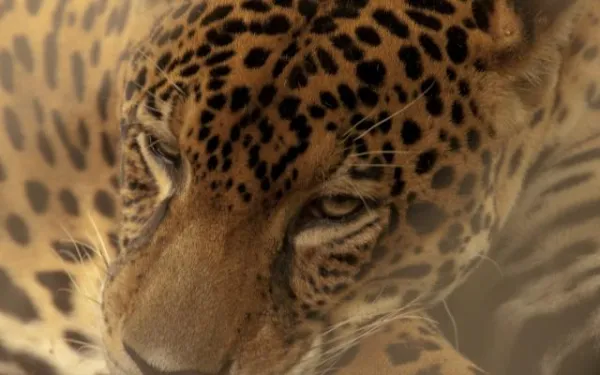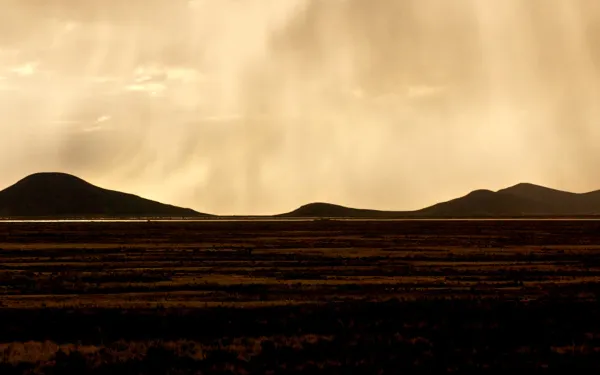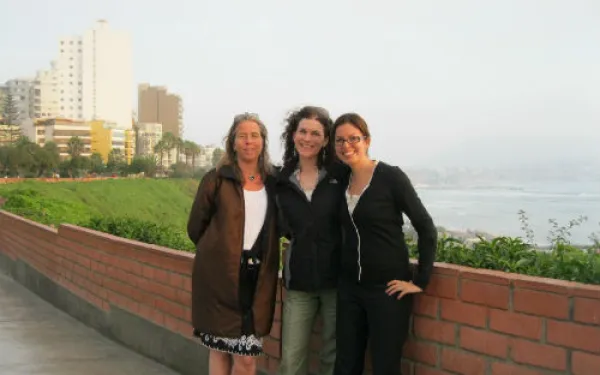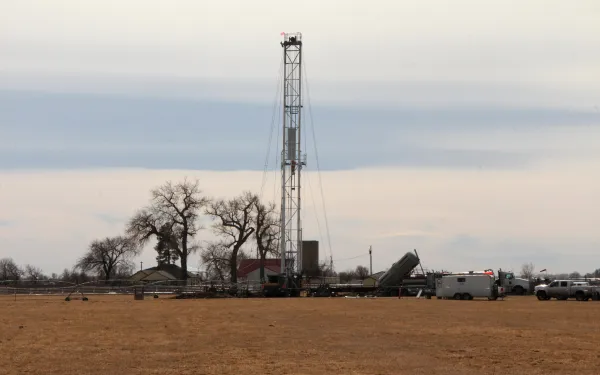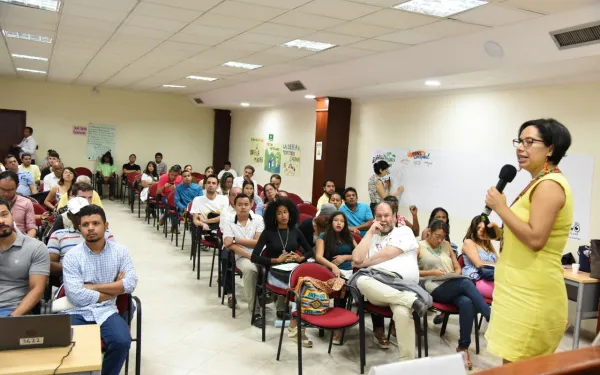
Tools for sustainable fisheries and coastal management
Our oceans are collapsing in every sense of the word. In the last hundred years, we have overfished and polluted most every treasured and productive marine and coastal ecosystem in reach. Climate change is now causing its own grave set of marine problems. Yet there is hope: success stories that suggest we can turn things around if we act now. AIDA is committed to making sustainable fisheries a reality and to helping restore and protect coastal waters throughout the Americas. To achieve this, we must help governments strengthen and enforce laws and regulations protecting marine and coastal biodiversity. AIDA’s new publication, “Tools for Sustainable Fisheries and Coastal Management” provides a road-map to tackle this challenging work. This Spanish-language guide explains the many problems plaguing our seas and provides specific legal, scientific and economic tools to more sustainably manage our marine and coastal resources. Government officials and legislators can use this information to develop, improve, and more effectively enforce national marine biodiversity laws and regulations. Read the Executive Summary (in Spanish) Chapter 1. The Oceans and Our Fisheries: the Need for Sustainable Marine Management Chapter 1 analyzes the current condition of the oceans, discussing those factors responsible for the decline in fisheries. Among those most responsible for the decline are overfishing, lack of regulation, and an abuse of technology. The chapter continues with a review of international legal instruments in force that establish obligations for governments to protect and conserve the seas and their biodiversity. The review concludes that current controls and preventative measures have not been sufficient to reduce harmful impacts on marine resources. Some fish populations are deteriorating so rapidly that new collapses in commercial fisheries may occur in several regions of the world. For this reason, it is up to decision-makers, consumers and the fishing industry to implement more effective control measures (presented in the following chapters) to prevent the same grave situations, provided as examples here. Chapter 2. Planning for Sustainable Fisheries This chapter addresses the issue of fishing regulations, which in most countries comprise an important tool to control the activity but are not the only answer to declining fish stocks. Once the term of fisheries management is defined, the discussion shifts to measures for fishing management and classification, from techniques to controls on inputs or efforts and products or catches. The chapter explores management plans that make use of only one of these measures. It also touches on the content of these plans and their design procedures and some of their outstanding aspects. Also mentioned in the chapter is the need to have regularly updated records of granted fishing permits as a requisite for sustainable management. It concludes that the plight of fish stocks should compel countries to properly organize fishing activities to ensure the recovery and availability of fish for future generations. Chapter 3. Limiting the Overall Fishing Effort Chapter 3 describes and analyzes the current regulatory instruments used to limit the overall fishing effort, including programs to reduce fishing boat licenses, decommission boats, retrain fishermen, and reduce the time nets are cast. The chapter also suggests measures that should be considered in order for these programs to truly accomplish their objectives. Additionally, the chapter provides examples of specific programs to limit the overall fishing effort that were designed and implemented in various countries and can serve as models for parties interested in designing similar programs. Chapter 4. Controlling Catch Levels This chapter looks at the measures implemented to exercise control over fish catches. Among them are the so-called traditional methods such as fishing permits and fees, setting quotas on catches, establishing fishing seasons for certain species (closed seasons) and the minimum size of the specimens of commercial species as well as those under special protection or management. These tools have been applied in various countries to control catches, and the chapter includes examples of where this has happened to provide examples of the many options available. Also described in this chapter are "alternative" methods that countries can implement to control catches and ensure sustainable fishing activities. Of these options, some deserve particular attention. One involves controlling incidental catch, or bycatch, given its importance for conserving marine species. Another involves setting individual fishing quotas (IFQs), the most modern method to control catches. Chapter 5. Controlling Bycatch This chapter examines the phenomenon of bycatch, responsible for much of the deterioration of the world's marine biodiversity. Given that most modern fishing methods do not discriminate between targeted and untargeted species, many resources are lost when captured incidentally as bycatch, including fish, marine mammals and birds, among others. The chapter begins by describing the different types of fishing and the risk each poses to bycatch. Subsequently, the chapter looks at the different existing security measures, including examples of how different countries have faced the problem. It then explains that it is best to opt for a combination of measures that will result in the best possible scenario. Chapter 6. Marine Coastal Planning This chapter examines the tools for coastal planning and management as a method for effectively protecting coastal zones and seas. Coastal zones are particularly vulnerable to jurisdiction conflicts over the use and allocation of coastal marine resources due to the diversity of activities and ecosystems that exist in them. The chapter also looks at integrated coastal management (ICM) as a continuous and dynamic process between community, science and the state to implement integrated plans for the protection and development of coastal resources. Examples of ICMs are explored in Peru, Belize, Mexico, Colombia, Costa Rica and the European Union. The issue is complemented with ecosystem-based management and examples of the governance of spaces and marine resources in Antarctica and the high sea. The chapter concludes that to effectively and sustainably manage our seas we must integrate the basics of biophysical, social, economic and planning with a long-term vision. Chapter 7. Forms of Marine Protection This chapter explores marine protected areas (MPAs) and their benefits as a conservation tool. It also mentions the MPA categories in relation to protected ecosystems and the classifications of international organizations like UNESCO and the International Union for Conservation of Nature. It then lists the problems and solutions related to the delimitation of the size of the MPAs as well as those related to the actions of control, inspection and surveillance, and to the current and future financing of these areas. As case studies, the treatment of the MPAs in law and public policy are examined in Mexico, Costa Rica and Brazil. The chapter includes measures for the protection of offshore resources by transnational MPAs and ends by addressing the difference between no-fishing zones and fish stocks. Chapter 8. Monitoring, Control and Surveillance of Fishing Activities This chapter explores the monitoring, control and surveillance techniques in different countries. It shows how they are necessary to verify compliance with standards and determine the effectiveness in doing so. Monitoring is important to collect fishing information for making decisions. The chapter also addresses the issue of sanctions. It’s important to have the administrative and criminal legislation necessary to sanction and prevent behaviors that threaten the sustainability of fishing and marine biodiversity, the text reads. The chapter emphasizes the need for coordinating efforts between the different systems of government and/or countries to achieve greater compliance with standards. Chapter 9. Economic Tools and Incentives for Responsible Fishing In this chapter, the main economic tools for responsible fishing are analyzed, which when efficiently designed and applied can promote the protection, restoration, preservation and sustainable use of marine resources. As it is immersed in market dynamics, fishing is especially susceptible to the application of economic instruments and incentives. The chapter discusses three categories of economic instruments: market (fish certification and eco-labeling), fiscal (green taxes, duties and subsidies) and financial (creating funds and loans). For each category, the concept of the tool and its practical application are explained through examples. The last section of the chapter examines other economic incentives such as penalties and fines that seek to promote positive behaviors in the population. The chapter wraps up with a series of recommendations for the effective use of economic tools. These include studying the economic and social reality for setting positive environmental goals and for applying these instruments together with other policy and monitoring tools. Chapter 10. Aquaculture y Mariculture In Chapter 10, AIDA explains the impacts and health risks associated with aquaculture in the Americas and discusses less harmful, alternative approaches. The chapter includes examples of both successful and unsuccessful projects. We provide detailed information about the damaging impacts of aquaculture on the marine environment, wild species, local economies, and public health. We also discuss the basic requirements needed to reduce harmful impacts from aquaculture activities such as: adequate zoning of projects; regulation of cultivated species; appropriate feeding and waste-elimination techniques; and effective government monitoring and enforcement, among others. Additionally, we explain novel techniques such as polyculture, land cultivation, and ecological certification, which are being researched as possible alternatives with less human and environmental impacts. Chapter 11. Social and Economic Aspects of Responsible Fishing This chapter focuses on the socio-environmental aspects of the fishing industry, which is crucial for job creation, food security and the potential for overcoming poverty in a large portion of the world population. The chapter begins by analyzing the current state of the sector, and it raises warnings about the poverty and harsh labor conditions of those working in fishing. The chapter calls for changes in fishing policies to promote real change to the grim conditions in the industry. Different alternatives for action are discussed, and each is illustrated by real experiences from around the world to show their success or failure and the lessons that can be learned from them. Executive SummarY (SPANISH) Read the Full Report (in Spanish) Acknowledgements We thank everyone who in one form or another contibuted their knowledge and expertise to this publication. We especially thank: Rolando Castro, member of the AIDA Board of Directors; Sofía Cortina, Isabel Calle, Samantha Namnum, Gladys Martínez, Sandra Moguel, Florencia Ortúzar, María Giménez, Mónica Ribadeneira, John Kaltenstein and Phil Eager, Haydée Rodríguez, Víctor Quintanilla, Clarissa Castillo, Diego Alvarez, lawyers with expertise on the subject of marine conservation; and all interns who have helped us make this possible.
Read more
